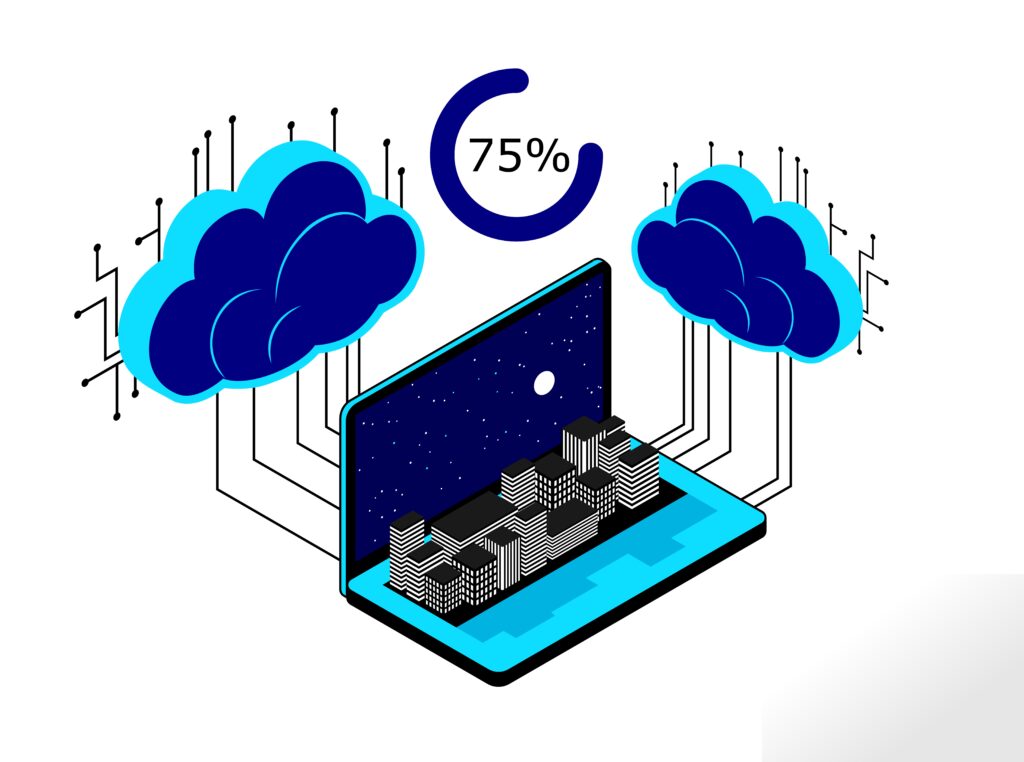
Introduction
A cloud management platform (CMP) is becoming essential for businesses navigating the complexities of modern cloud environments.
Currently, 93% of companies having multi-cloud infrastructures with an average of 4.8 cloud platforms. There has never been a more critical time for effective cross-platform mitigation and management.
The cloud dependency continues to widen, and with it the challenges of managing multiple cloud service environments simultaneously becomes more complex, poses greater security threats, and spirals out of financial control.
CMPs allow comprehensive control, security centralization, and cost minimization supervision under a single platform.
With them, businesses can consolidate their processes, safeguard their cloud ecosystems, and put their resources to good use.
In this article, we discuss the increase in multi-cloud environments, how cloud management platforms (CMPs) aid in managing them, and what businesses stand to gain in 2025.
The Rise of Multi-Cloud & The Role of Cloud Management Platforms
With the development of each business, the use of various cloud providers has become a challenge requiring management attention. Due to the sheer number of businesses that exist today, each using different providers, maintaining security and devising an effective cost management strategy becomes all the more difficult.
With a centralized Cloud Financial Management Platform, businesses no longer have to juggle between dashboards as their operations across Google Cloud, Azure, and AWS are managed from a common interface. The platform manages compliance enforcement with security enhancement and workload streamlining.
Currently, overspending from redundant resources is a risk that many companies are not too far away from. The forecast suggests that spending in the cloud will reach 1.35 trillion in 2027, rendering it even more pertinent today.
To maintain business operational efficiency while controlling overspending, CMP are not just an upgrade, rather a necessity.
Key Benefits of Implementing a Cloud Management Platform
Apart from the sheer adoption of cloud technologies, businesses seeking greater operational efficiency need reliable tools to achieve their goals.
By enabling solid approaches to governance and security, as well as cost control through automation, cloud management platforms have emerged as a game-changer or a critical solution.
Regardless of whether a business utilizes a single cloud provider or multiple at the same time, CMPs ensure boosted visibility and automation ensuring enhanced efficiency at the same time.
1. Unified Control Across Cloud Providers
Trying to manage multiple cloud environments at the same time can be chaotic. A multi-cloud management platform streamlines operations by providing a single managed dashboard to view workloads, policies, compliance, and governance across AWS, Azure, Google Cloud and other cloud.
With a managed view, IT teams can identify and address security issues quickly and enforce security measures more efficiently without switching between different provider portals.
2. Smarter Cloud Cost Management
Anomalies like over-provisioned instances, unused, and storage combined with multiple resource silos are usually the perpetuating reasons as to why a business’s cloud budget can get out of control.
Unlike traditional methods, those that include cost optimization are proactive and allow businesses to monitor spending in real time, receive budget warnings, and automate recommendations to save money.
Organizations are also able to reduce overspending by dynamically optimizing workloads due to powerful predictor analytics and AI insights anticipating future costs.
3. Enhanced Security and Compliance
Falling victim to a cloud security breach is becoming more and more common, which is an alarming rate for growing businesses.
A cloud management platform helps maintain proactive protection by applying set uniform security policies and spotting misconfigurations and decisions that violate or fall short of industry compliance regulations such as GDPR and HIPAA.
Furthermore, monitoring in real-time helps counteract problems before they worsen by spotting vulnerabilities. This kind of pre-emptive action greatly mitigates the chance of non-compliance and data losses and leaks.
4. Improved Performance and Scalability
With a CMP, businesses can take advantage of improved performance because resources can be dynamically scaled and distributed across different cloud environments.
This is very important for companies with volatile demand because performance needs are consistently being met without unnecessary infrastructure spending.
Automated scaling policies can allocate resources based on real-time needs, preventing bottlenecks while minimizing excess capacity costs.
With cloud complexity increasing, relying on spreadsheets and manual oversight is no longer sustainable. It is a must for companies in 2025 to have a CMP that manages resource optimization, governance, and secures cloud environments because these systems automate almost everything.
Cloud strategies need to be tackled head-on or businesses will get left behind as automation and optimization will be used heavily for growth.
Multi-Cloud FinOps & CMPs: The Financial Edge
The uncontrolled growth of cloud costs is symptomatic of the absence of coherent financial management.
That’s where multi-cloud FinOps comes in, a framework designed to bring accountability and cost efficiency to cloud operations.
The main problem in the multi-cloud environment rests in the lack of ability to monitor, analyze, and optimize spending across different providers.
This is exactly what CloudVerse AI solves. As a cloud financial management platform, CloudVerse AI provides real-time cost monitoring, automated budget controls, and predictive analytics, helping businesses make data-driven financial decisions.
How CloudVerse Powers Cost Optimization in Multi-Cloud Environments
Real-Time Cost Visibility
Most companies providing cloud services make it hard for consumers to understand their billing because it is too elaborate. CloudVerse simplifies this by integrating with various cloud providers, accumulating all expenses, and offering a breakdown on one dashboard.Automated Cost-Saving Recommendations
CloudVerse AI’s cloud cost optimization tool monitors usage metrics and provides automated recommendations to eliminate unneeded spending by downsizing, cancelling, and using reserved instances for idle resources.Budgeting & Forecasting with AI
Due to variation in workloads, predicting cloud expenses can be difficult. CloudVerse AI’s artificial intelligence powered insights give businesses predictive cost expenses by analyzing their history.Chargeback & Cost Allocation
CloudVerse AI offers chargeback and showback options for large enterprises with numerous teams or departments. This feature offers cost accountability for all cloud users, which enhances financial transparency.
Why CloudVerse is Essential in 2025
With global cloud spending projected to hit $1.35 trillion by 2027, businesses that fail to optimize their cloud financials risk losing millions in unnecessary expenses.
Investing in cloud infrastructure is always associated with growth. CloudVerse ensures that every dollar spent is maximized through intelligent cost management, automation, and visibility, which is crucial not only for increasing cloud spending, but also optimizing it.
In the case of organizations which have little financial control due to poor cloud governance, CloudVerse AI savings and scalability blend seamlessly to enable businesses take charge of their cloud investments.
Conclusion
The adoption of cloud computing is on the rise, however, deploying a cloud management solution is key to avoiding unnecessary wasted resources and spending.
With CloudVerse AI, businesses can capitalize on every investment spent on the cloud as it simplifies multi-cloud FinOps by automating cost governance and optimization.
Effective cloud environment management will shift from a perk to a necessity in 2025. That said, companies who act now stand to gain the most in the future. With CloudVerse AI you don’t just manage the cloud, you set it up for long-term success.
Ready to take control of your multi-cloud FinOps? Schedule a call with CloudVerse AI today.

Author Bio: With 4.5+ years of experience, Shalini Laxmish has crafted content across multiple industries—B2B SaaS, B2C, ed-tech, arts, festivals, and more. Shalini specializes in turning complex ideas into creative, SEO-optimized content that connects with the target audience. Whether it’s tech insights or storytelling, Shalini’s focus is on delivering content that informs, engages, and connects with readers.